3:30 p.m. New York Time
Half an hour before the closing bell. The S&P 500 futures continued to fall during the session, reaching into the 5320s. Elliott Wave Theory: The small 4th-degree downward correction that began at the overnight high continues.
I’ve updated the chart.
9:35 a.m. New York time
What’s happening now? The S&P 500 E-mini futures rose gently into the 5340s overnight and then pulled back slightly.
What does it mean? Elliott Wave Theory sees the rise as a continuation of the 5th-wave uptrend that began on April 18 from 4963.50. The rise carried the price beyond the end of the prior 3rd wave of the same degree, 5333.50 on March 31.
In the discussion that follows, I’ll include the wave labeling on the chart, with each wave number followed by a subscript in curly brackets telling the degree’s distance from the much larger Intermediate degree. The present Intermediate degree, wave 5{0}, began in December 2018, and the 5th-wave uptrend that began on April 18 is wave 5{-5}, which is five degrees smaller that the Intermediate degree.
The upward push, at a low degree, is a 5th-wave uptrend that began on May 14, wave 5{-9}. In yesterday’s analysis I wrote that the 5th wave was in its 5th subwave (wave 5{-10}. As it turns out, yesterday’s rise was the 3rd subwave (wave 3{-10}, ending at the overnight peak, and the slight subwave that followed is the 4th subwave (wave 4{-10}. By that count, the wave 5{-9} has one more uptrending subwave to go before reaching its end.
The end of the low-degree 5th wave will work its way up the fractal structure of the chart, also marking the end of the 5th wave that began on May 8 (wave 5{-8} and the 3rd wave that began on May 2 {wave 3{-7}.
A 4th-wave downward correction will follow {wave 4{-7}}, followed by a 5th-wave rise (wave 5{-7}) that will complete the 1st subwave (wave 1{-6}) of the 5th-wave uptrend that began on April 18 (wave 5{-5}).
What are the alternatives? That 1st wave labeling, wave 1{-6}, may be problematic. It seemed likely that the 1st wave within the 5th-wave uptrend, wave 5{-5}, was still underway, given the size of other movements of that degree. Price movements — waves – – in Elliott wave analysis are labeled with numbers within trending waves and letters with corrective waves. But what if the waves below wave 1{-6} continue to stretch out the time taken to reach completion? It’s possible that what I’ve labeled as wave 5{-7} should really be labeled as wave 5{-6}, eliminating the problematic 1st wave and moving everything within it up one degree.
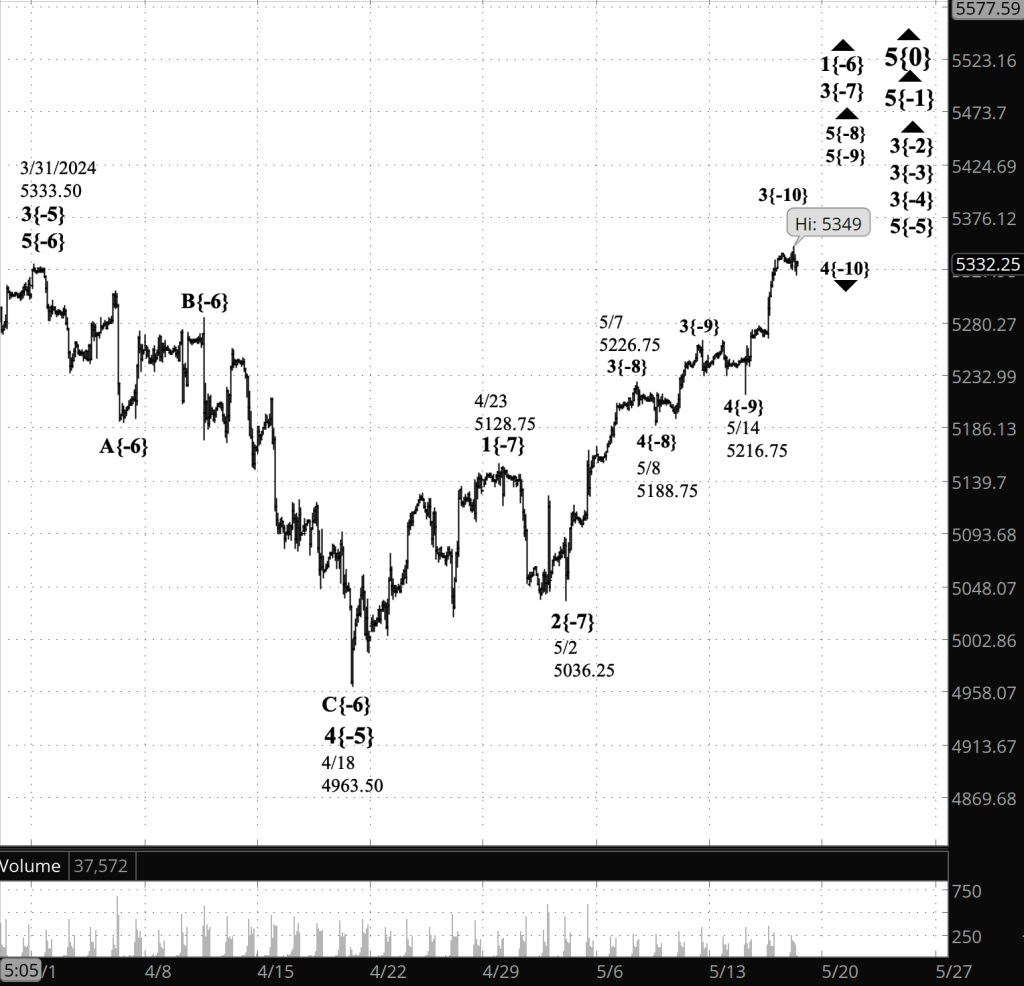
[S&P 500 E-mini futures at 3:30 p.m., 85-minute bars, with volume]
What does Elliott wave theory say? Here are the waves that underly the analyses.
Principal Analysis:
- Rising wave 5{0} is underway. It is a wave of Intermediate degree that began in December 2018.
- It is in its final subwave, wave 5{-1}.
- Within wave 5{-1}, rising waves 3{-2}, 3{-3} and 3{-4} are underway, as is wave 5{-5}.
- Wave 1{-6} is underway and is in its middle subwave, wave 3{-7}, which is in its final subwave, wave 5{-8}.
- Wave 5{-8} is in its final subwave, wave 5{-9}, which is in its next-to-the-last subwave, wave 4{-10}.
Reading the chart. Price movements — waves – – in Elliott wave analysis are labeled with numbers within trending waves and letters with corrective waves. The subscripts — numbers in curly brackets — designate the wave’s degree, which, in Elliott wave analysis, means the relative position of a wave within the larger and smaller structures that make up the chart. R.N. Elliott, who in the 1930s developed the form of analysis that bears his name, viewed the chart as a complex structure of smaller waves nested within larger waves, which in turn are nested within still larger waves. In mathematics it’s called a fractal structure, where at every scale the pattern is similar to the others.
Learning and other resources. Elliott wave analysis provides context, not prophecy. As the 20th century semanticist Alfred Korzybski put it in his book Science and Sanity (1933), “The map is not the territory … The only usefulness of a map depends on similarity of structure between the empirical world and the map.” And I would add, in the ever-changing markets, we can judge that similarity of structure only after the fact.
See the menu page Analytical Methods for a rundown on where to go for information on Elliott wave analysis.
By Tim Bovee, Portland, Oregon, May 16, 2024
Disclaimer
Tim Bovee, Private Trader tracks the analysis and trades of a private trader for his own accounts. Nothing in this blog constitutes a recommendation to buy or sell stocks, options or any other financial instrument. The only purpose of this blog is to provide education and entertainment.
No trader is ever 100 percent successful in his or her trades. Trading in the stock and option markets is risky and uncertain. Each trader must make trading decisions for his or her own account, and take responsibility for the consequences.
All content on Tim Bovee, Private Trader by Timothy K. Bovee is licensed under a Creative Commons Attribution-ShareAlike 4.0 International License.
Based on a work at www.timbovee.com.




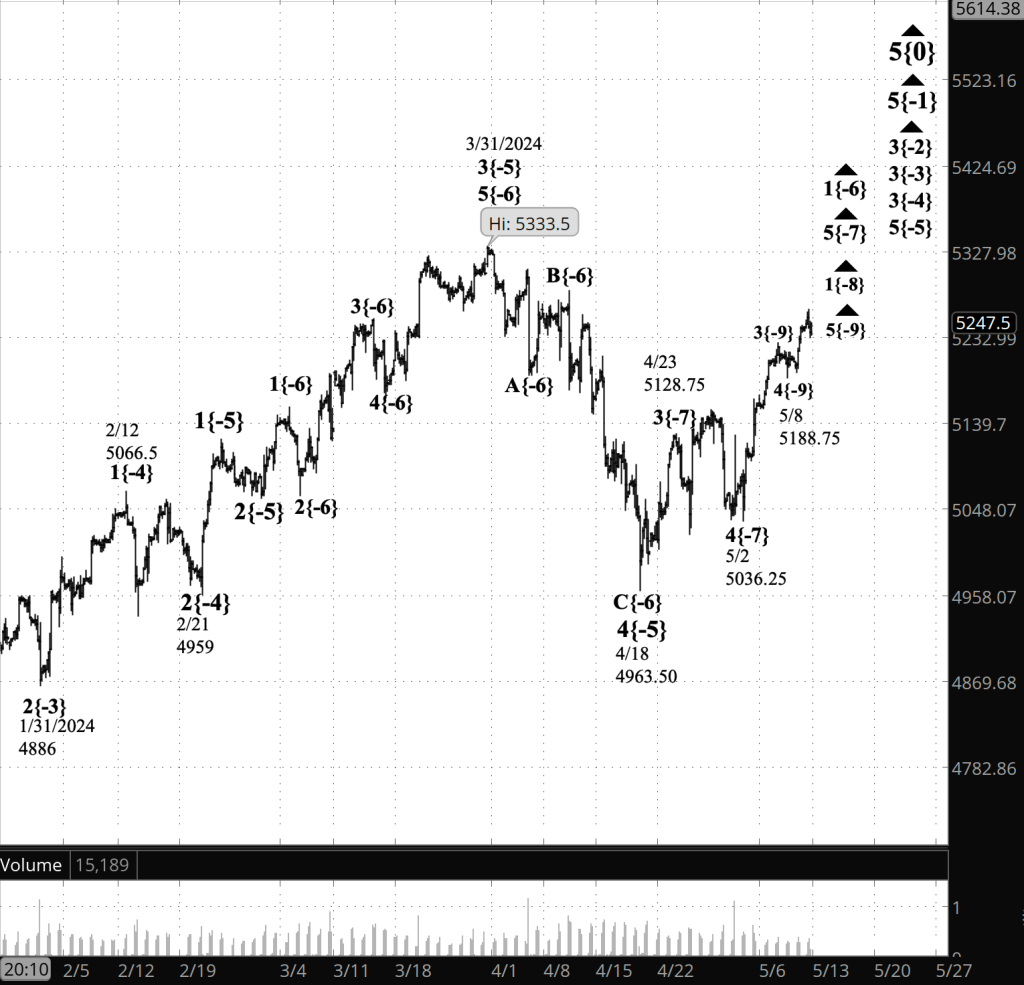
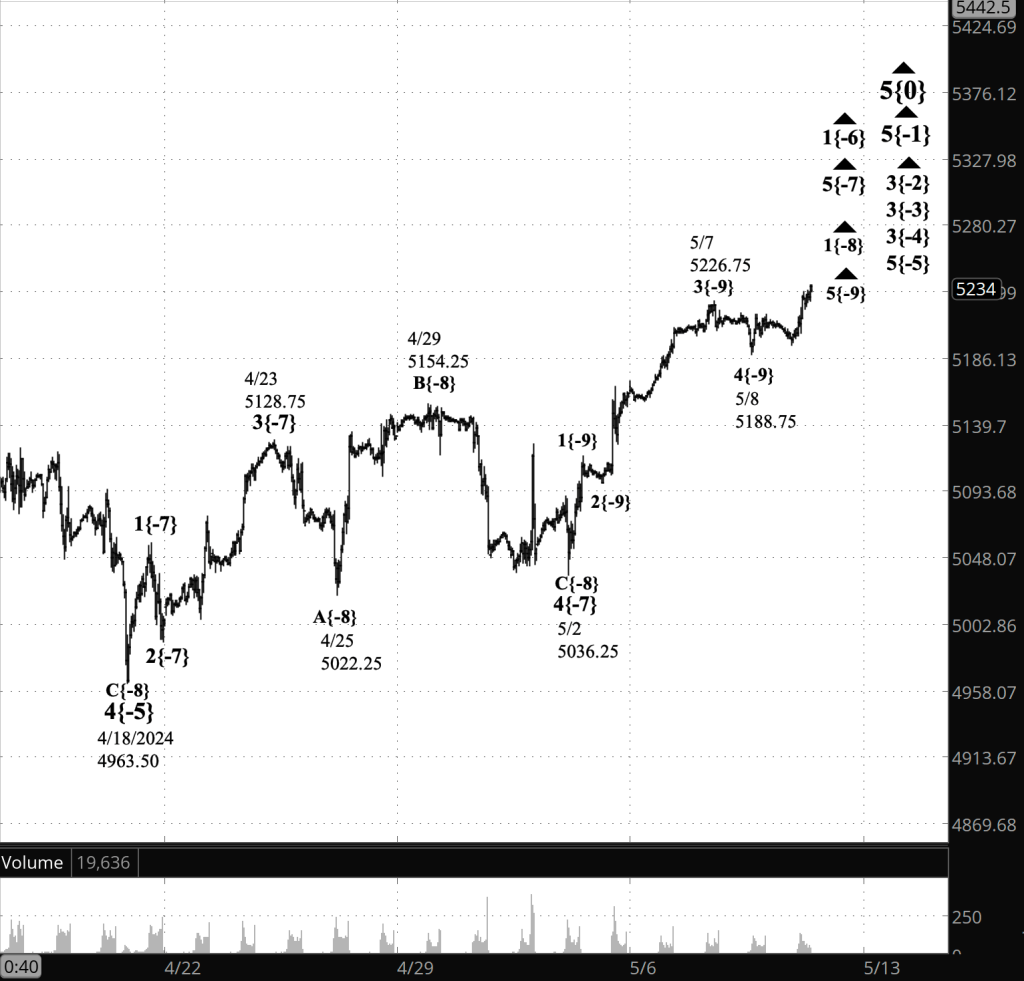
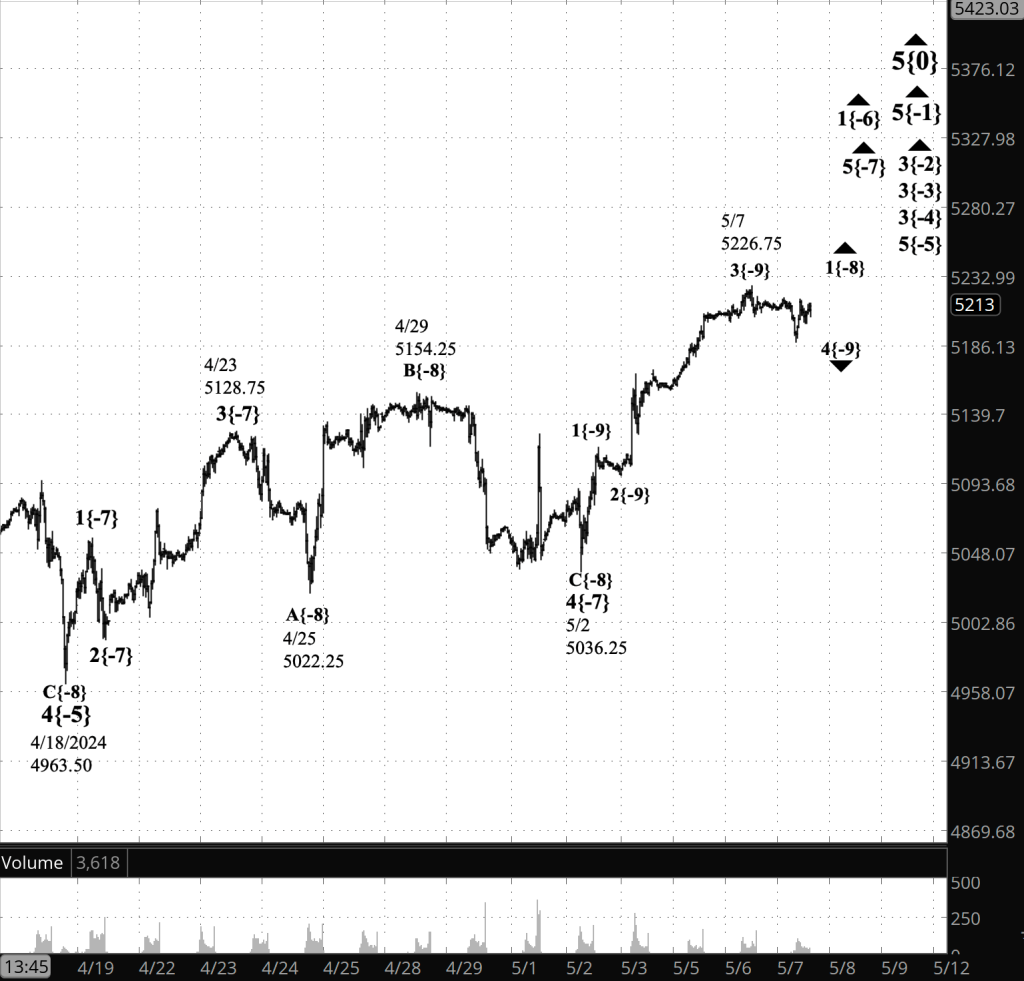
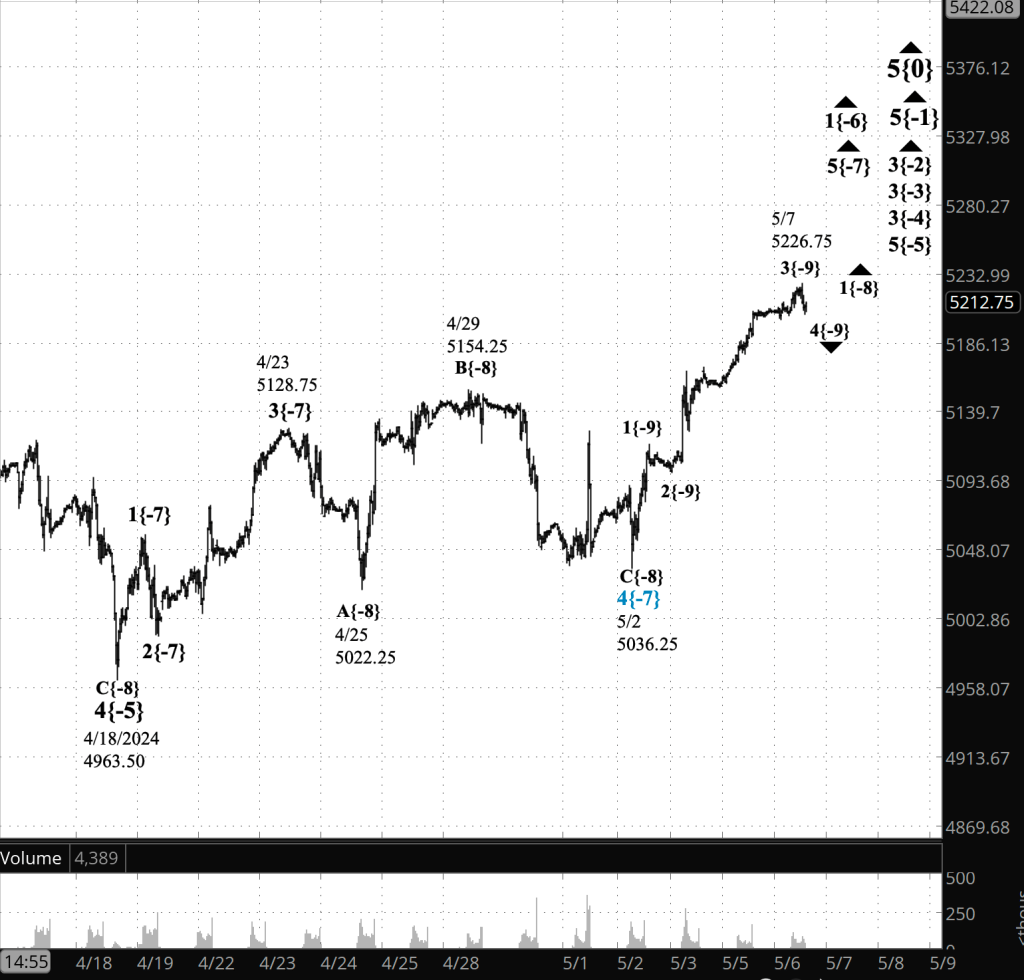


You must be logged in to post a comment.